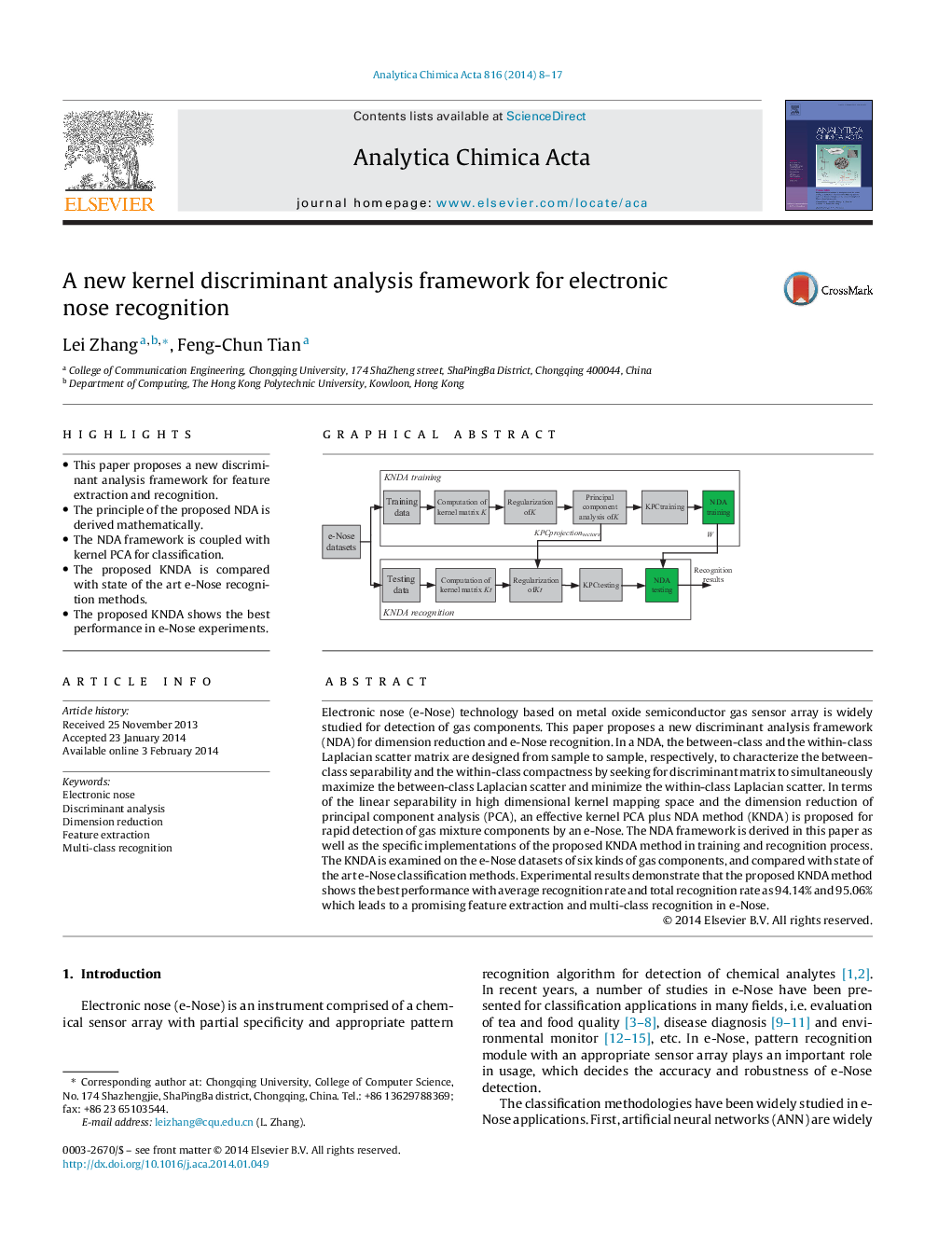| کد مقاله | کد نشریه | سال انتشار | مقاله انگلیسی | نسخه تمام متن |
|---|---|---|---|---|
| 1164071 | 1491016 | 2014 | 10 صفحه PDF | دانلود رایگان |
• This paper proposes a new discriminant analysis framework for feature extraction and recognition.
• The principle of the proposed NDA is derived mathematically.
• The NDA framework is coupled with kernel PCA for classification.
• The proposed KNDA is compared with state of the art e-Nose recognition methods.
• The proposed KNDA shows the best performance in e-Nose experiments.
Electronic nose (e-Nose) technology based on metal oxide semiconductor gas sensor array is widely studied for detection of gas components. This paper proposes a new discriminant analysis framework (NDA) for dimension reduction and e-Nose recognition. In a NDA, the between-class and the within-class Laplacian scatter matrix are designed from sample to sample, respectively, to characterize the between-class separability and the within-class compactness by seeking for discriminant matrix to simultaneously maximize the between-class Laplacian scatter and minimize the within-class Laplacian scatter. In terms of the linear separability in high dimensional kernel mapping space and the dimension reduction of principal component analysis (PCA), an effective kernel PCA plus NDA method (KNDA) is proposed for rapid detection of gas mixture components by an e-Nose. The NDA framework is derived in this paper as well as the specific implementations of the proposed KNDA method in training and recognition process. The KNDA is examined on the e-Nose datasets of six kinds of gas components, and compared with state of the art e-Nose classification methods. Experimental results demonstrate that the proposed KNDA method shows the best performance with average recognition rate and total recognition rate as 94.14% and 95.06% which leads to a promising feature extraction and multi-class recognition in e-Nose.
Figure optionsDownload as PowerPoint slide
Journal: Analytica Chimica Acta - Volume 816, 13 March 2014, Pages 8–17
